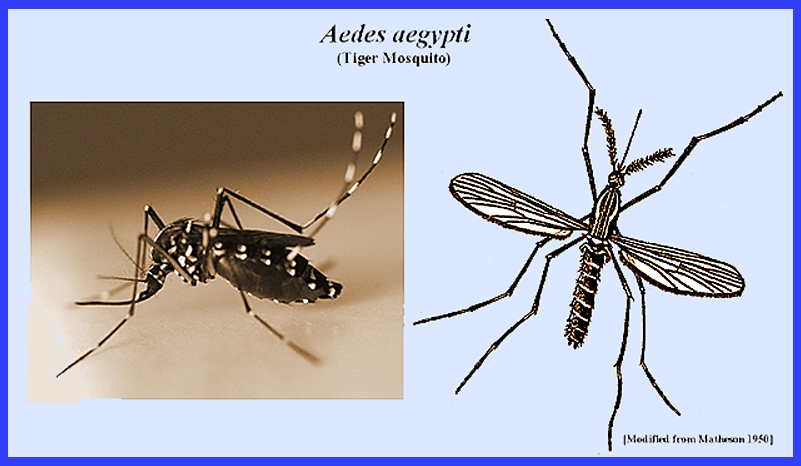File: <ebolaandarthropods.htm> <Medical
Index> <General Index> Site Description Glossary <Navigate
to Home>
|
EBOLA VIRUS DISEASE (Contact) Please
CLICK on
image and underlined links for details:[ [Also see: "Potential
Insect Vector Cycle"]
Studies of
insects found at Ebola outbreak
sites have failed to isolate Ebola in an arthropod. However, specimens were not collected at
the beginning of the outbreaks, and during the first Ebola Sudan outbreak, DDT was sprayed
around the hospital and the surrounding area. Kunz (1968)
reported Aedes aegypti as a vector of
the virus, but subsequent studies to ascertain whether Ebola replicates in A. aegypti have failed to
reproduce the result of the Kunz (1968) study. However, the recent study did not use the strains of Ebola, Ebola
Cote d'Ivoire, Ebola Sudan
and Ebola Zaire, that are the
causative agents of the outbreaks.
Only a small fraction of the specimens collected have been tested for Ebola.
Arthropods that were present at the beginning of outbreaks have yet to
be collected and analyzed. The
reservoir insect could be a seasonal insect, tick or mite and not be present
when insect species are collected for analysis. A particular
type arthropod could be an intermediate host and not the natural reservoir,
or another organism could be the intermediate host obtaining Ebola from a particular arthropod
species. = = = = = = = = = = = =
= = = = = = = = Key References: <medvet.ref.htm> <Hexapoda> Breman, Joel, et al.
1999. A Search for
Ebola Virus in Animals in the Democratic Republic of the Congo: Ecologic,
Virologic, and Serologic Surveys,
1979-1980. J. Infect. Diseases 179 (Suppl 1): S139-47. Conrad J. L. et al.
1978.
Epidemiological investigations of Marburg virus diseases, southern
Africa, 1975. Amer.
J. Tropical Med. & Hyg. 27:1210-5. Kunz, C. et al. 1968. Die vermehrung des Marburg-Virus in Aedes aegypt. Zentralbl Bakteriol I
Orig 208:347-9. Lolik, Pacifico.
1978. Containment and
Surveillance of the Ebola Virus Epidemic in Southern Sudan. Ebola Virus Haemorrhagic Fever. Berlin:
Elsevier/North-Holland Biomedical Press. Monath, Thomas.
1999. Ecology of Marburg and
Ebola Viruses: Speculations and Directions for Future Research. J. Infect. Diseases. 179
(Suppl 1):S127-38. Turrell M. J.
et al. 1996. Lack of virus replication in arthropods
after intrathoracic inoculation of Ebola Reston virus. Amer. J. Tropical Med.
& Hyg. 55:89-90. |
